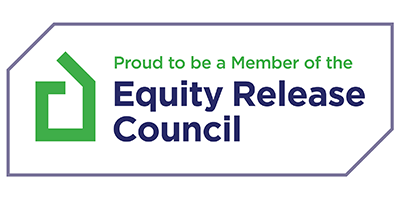In this article
If you currently have a bridging loan in place that is due to be repaid soon, you might be wondering about your options.
One viable option is to refinance your existing bridging loan, often called re-bridging. In this article, we will explore what refinancing involves, why you might consider it, and how you can go about it.
What Does Refinancing a Bridging Loan Mean?
Refinancing involves replacing your current loan with a new one, often with different terms. The new loan pays off the old one, and you carry on the loan with a new lender.
Bridging loans are not designed to be refinanced therefore your current lender is unlikely to provide any options of extension for you.
Also, there will be a limited number of situations where a new lender will accept your refinance application.
Why Consider Refinancing a Bridging Loan?
Avoiding Repayment Difficulties
This is the most common reason for refinancing bridging finance. If your bridging loan is due to be repaid soon but you’re not able to pay it off, refinancing can prevent financial difficulties.
Refinancing allows you to extend the loan term, giving you more time, typically up to 12 to 24 months, to secure long-term financing or sell the property.
Lower Interest Rates
Bridging loans typically come with higher interest rates. By refinancing, you might be able to secure a loan with a lower interest rate, reducing your overall borrowing costs.
This can be particularly beneficial if interest rates have dropped since you first took out your bridging loan.
Due to the initial fees involved, larger bridging loans will benefit more in this situation, with smaller ones, this might not be a viable option.
Raise Additional Funds
If you need extra funds, refinancing your bridging loan can be a way to access additional capital. This can be useful if you have unforeseen expenses or need more time to sell your property.
How to Refinance a Bridging Loan
Refinancing a bridging loan involves several steps and we always recommend seeking professional independent mortgage advice as there may be better alternative products available to you.
Here’s a guide to help you through the process:
Assess Your Current Situation
Start by assessing your current financial situation and the terms of your existing bridging loan. Understand how much you owe, the interest rate, and the repayment schedule.
This will help you determine what you need from a new loan and why you are in the position of having to refinance.
Research Lenders
Not all lenders offer refinancing for bridging loans, so it’s important to find those that do. Look for lenders with experience in bridging finance and a good reputation.
Compare their terms, interest rates, and fees to find the best option for your needs. Your bridging advisor will help you explore lender options here.
Prepare Documentation
Lenders will require detailed information about your current loan, the property used as security, and your financial situation.
Gather documents such as your loan agreement, property valuations, proof of income, and details of any other debts.
The lender will also need to understand the reason why your current bridging loan needs to be refinanced and why it has not been repaid.
Speak to a Mortgage Advisor
Speaking to a mortgage advisor, like us, can be extremely beneficial. They can help you understand your options, guide you through the application process, and negotiate better terms with lenders.
A mortgage advisor who specialises in bridging loans can provide valuable insights and support.
Submit Your Application
Once you’ve chosen a lender, submit your application for bridging refinancing.
Be prepared for the lender to conduct a thorough assessment of your financial situation and the property. They may require additional documentation or ask for further information.
Review the Offer
If your bridging refinancing application is successful, the lender will provide an offer outlining the terms of the new loan.
Review this offer carefully, paying attention to the interest rate, repayment schedule, and any fees. Make sure you understand all the terms before proceeding.
Complete the Refinancing Process
If you’re happy with the offer, proceed with completing the refinancing process.
This typically involves signing the new loan agreement and using the funds to pay off your existing bridging loan. Your mortgage advisor can help ensure everything goes smoothly.
Considerations When Refinancing a Bridging Loan
While refinancing a bridging loan can offer many benefits, there are also important considerations to keep in mind:
Costs and Fees
Refinancing bridging finance comes with costs, including arrangement fees, valuation fees, and legal fees. Make sure you understand these costs and factor them into your decision.
Sometimes, the costs of refinancing can outweigh the benefits, so it’s important to do a thorough analysis.
Credit Impact
Applying for a new bridging loan can impact your credit score. Multiple applications for credit within a short period can lower your score, so be mindful of this when considering refinancing.
Timing
The timing of your refinancing is crucial. Ensure that you start the process well before your existing loan is due to be repaid.
This gives you ample time to find the best deal and complete the necessary steps without rushing.
Long-Term Financial Strategy
Consider how refinancing fits into your long-term financial strategy. Make sure the new loan aligns with your overall goals and that you have a clear plan for repaying it.
Think about your future financial situation and whether the terms of the new loan will be manageable in the long term.
Speak to an Advisor – It’s Free!
Schedule a free callback from one of our experts today.
- All situations considered
- Transparent and honest mortgage advice
- We search 1000s of purchase and remortgage deals
Our customers rate us 4.9/5
Alternatives to Refinancing
There may be better financial products suitable for your situation that save you money, this is why seeking great independent bridging loan advice is vital.
If refinancing isn’t the right option for you, there are alternatives to consider:
Extending Your Current Loan
Speak to your current lender about extending the term of your existing bridging loan.
They may be willing to offer more time, especially if you have a good repayment history and a solid plan for repaying the loan.
Securing Long-Term Financing
Look into securing a long-term mortgage or loan to pay off your bridging loan. This can provide a more stable and manageable repayment schedule.
Speak with a mortgage advisor to explore your options and find the best long-term financing solution.
Selling the Property Quickly
If possible, consider selling the property quickly to repay the loan. While this might not always be feasible, it can be a straightforward way to settle the debt. Work with an experienced estate agent to help facilitate a quick sale.
Bridging Loan Refinancing Advice
Refinancing an existing bridging loan can be a practical solution if your loan is due to be repaid soon and you cannot settle it.
By refinancing, you can potentially secure better terms, lower interest rates, and more manageable repayments, however, it’s important to carefully consider the costs, timing, and long-term impact of refinancing.
Speak to a mortgage advisor, research your options, and ensure you have a clear plan in place. By taking these steps, you can make an informed decision that best suits your financial needs and goals.
At UK Moneyman, our independent mortgage advisors help you navigate the refinancing process and find the best solution for your circumstances.
Contact us today to discuss your options and get expert advice tailored to your needs.







